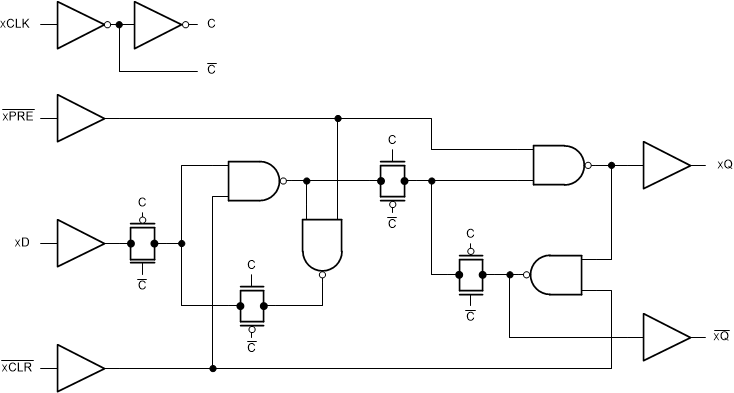SBOK085 April 2024 SN54SC2T74-SEP
PRODUCTION DATA
2 Single-Event Effects (SEE)
The primary single-event effect (SEE) event
of interest in the SN54SC2T74-SEP is the destructive single-event latch-up. From a risk
or impact perspective, the occurrence of an SEL is potentially the most destructive SEE
event and the biggest concern for space applications. In mixed technologies such as the
Linear BiCMOS (LBC9) process used for SN54SC2T74-SEP, the CMOS circuitry introduces a
potential SEL susceptibility. SEL can occur if excess current injection caused by the
passage of an energetic ion is high enough to trigger the formation of a parasitic
cross-coupled PNP and NPN bipolar structure (formed between the p-substrate and n-well
and n+ and p+ contacts). The parasitic bipolar structure initiated by a single-event
creates a high-conductance path (inducing a steady-state current that is typically
orders-of-magnitude higher than the normal operating current) between power and ground
that persists (is latched) until power is removed or until the device is destroyed by
the high-current state. The process modifications applied for SEL-mitigation were
sufficient, as the SN54SC2T74-SEP exhibited no SEL with heavy-ions up to an
LETEFF of 43 MeV-cm2 / mg at a fluence of 1 × 107
ions / cm2 and a chip temperature of 125°C.
 Figure 2-1 Functional Block Diagram of
the SN54SC2T74-SEP
Figure 2-1 Functional Block Diagram of
the SN54SC2T74-SEP
 Figure 2-1 Functional Block Diagram of
the SN54SC2T74-SEP
Figure 2-1 Functional Block Diagram of
the SN54SC2T74-SEP